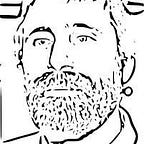Vintage Surfboard Rehabilitation: A Documentary in Words and Images (Part I)
This is a story about my ongoing effort to rehabilitate a 9'6" Dewey Weber Feather. Affectionately named BLACK SHEEP for some reason I am still trying to track down, this Feather clearly had a rough decade or two before I picked it up. It’s not a candidate for a legitimate restoration.
In 1967, Dewey Weber Surf Boards (yes, two words) came out with a longboard called the Weber Feather. The Feather shared some of the features of the company’s wildly successful Performer model, the most popular surfboard in history.
The Feather married the wide, blade-like nose, basic rocker, and pinched 60–40 rails of the Performer with a tight pintail and subtle hips that evoked the Velzy Pig shape. It came with a range of stringer options, including, by 1968, a stringerless version known as the Feather Lightweight. Together, the pin and hips made the Feather quick and relatively easy to turn for a board 9'+ long and weighing over 25 pounds. It was designed to work well at beach breaks, making it a great candidate for New England surf.
Of course, 1967–68 also marked the start of the shortboard revolution, a decades-long fascination with shorter and lighter boards that decimated many established California surfboard manufacturers. The Feather launched into the headwind of this revolution. I don’t know how many Weber Feathers were made, but it didn’t stay in the Weber catalog much beyond 1968. The Feather Fastback and Ski soon emerged and quickly moved to the front of Weber’s catalog, as longboards all but disappeared from shaping bays.
Dewey Weber, nicknamed the little man on wheels for his diminutive stature and hot dog surf style, was one of the most enterprising of California’s surfboard manufacturers. His was perhaps the first company to establish a dealer network up and down the Atlantic seaboard, including surf shops in Massachusetts, New Hampshire, and Maine. Supported by a globetrotting team of world class surfers outfitted in matching team gear, the Weber brand was well established in late-60s New England beach communities. In the 1960s, surfing contests were a regular part of beach life in towns like York and Ogunquit, Maine.
As documented in Mike Tabeling’s East Coast Surfing History, Linda Peters and Stevie Byrne rode Weber Performers in Maine surf contests in the late 1960s. Several of the photos in Tabeling’s history show the evolution of the Performer, and Dewey himself makes a cameo appearance alongside Byrne in one photo. With the company’s founder in Maine to promote the board, it’s clear that marketing and product placement were at least as much of the story behind the Performer’s success as was the performance of the board itself.
My Feather likely made its way to New England in the late 1960s through this extensive dealer network, though it’s impossible for me to know the board’s provenance. It either never had a serial number, or time and neglect have conspired to erase it from the foam and disintegrated portions of the t-band stringer.
Read Part II — Replacing a T-band Stringer
